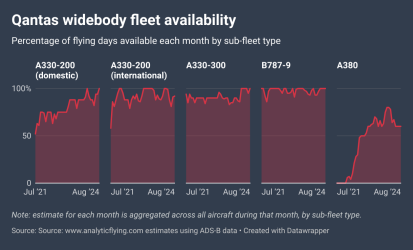Sprucegoose
Senior Member
- Joined
- Aug 20, 2003
- Posts
- 8,298
100% they'd still be sitting awaiting their D-check. Even LH and EK are running well behind on A380 D-checks. No idea how people expect QF to somehow jump the queue.
Does QF do any D checks in LAX? I know they use Abu Dhabi

















